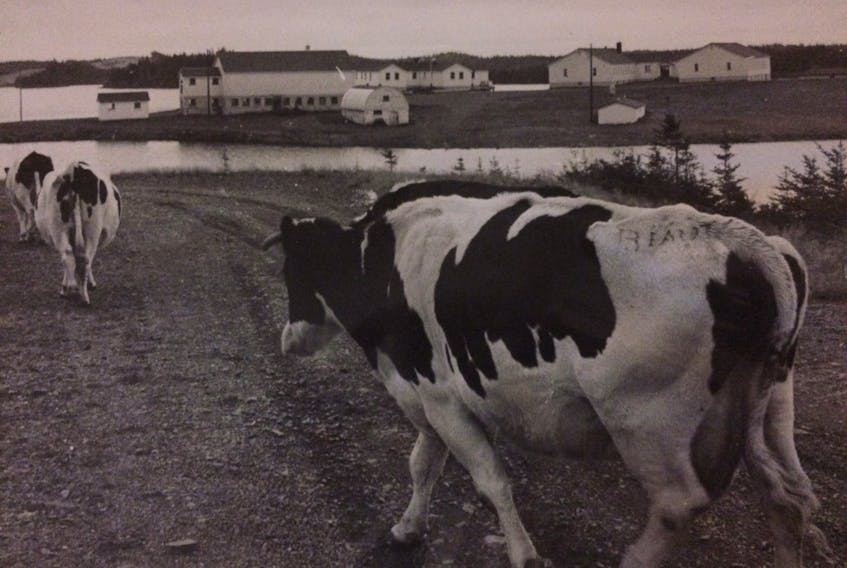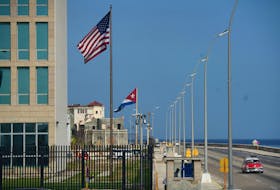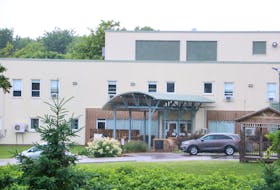For nearly 70 years, criminals from this province whose offences deemed them suitable for a minimum-security stay were sent to the Salmonier Correctional Institution.

A working farm at Little Gull Pond on the Avalon Peninsula, the prison was spread over 2,500 acres used to raise beef and dairy cattle, poultry for egg production and to grow root vegetables and make hay. Inmates lived dormitory style and learned agricultural, animal husbandry and carpentry skills, among others, co-operatively working the land that helped sustain them.
The milk was sold to Central Dairies and the vegetables and eggs used to feed inmates and corrections staff.
In winter, prisoners worked in a forestry program, cutting wood for the camp’s sawmill for use by the Department of Works, Services and Transportation.
In 1998, then head of adult corrections Marvin McNutt was musing about the possibility of boosting the prison’s output.
“…We feel that we can increase our production targets substantially, which will give us increased revenue,” he told The Telegram in January of that year, saying of the place, “There’s much more freedom and much more relaxed atmosphere than there would be at the penitentiary in St. John’s.”
A Salmonier inmate named Darrin, writing in the institution’s newsletter, Time on the Line, back in 1997, wrote: “If I was asked to depict Salmonier without making reference to prison, I would refer to it as a work farm with a living quarters for its hired hands. … In order to serve your incarceration period there you must be willing to work, be co-operative and be a well-disciplined inmate. Salmonier has many benefits, ranging from freedom to education to therapy. lnmates at Salmonier are not locked in their rooms but do have certain rules to which they must conform. Outdoor activity is very prevalent and it is an environment which allows an inmate the space to work, live and relax in the beautiful outdoors. We also have a school which is very beneficial to all inmates.”
Seven years later the institution’s doors were closed, the victim of budget cuts in 2004 during the Danny Williams administration.
Inmates lived dormitory style and learned agricultural, animal husbandry and carpentry skills, among others, co-operatively working the land that helped sustain them.
Ironically, the province was soon to experience an economic upswing, ushering in the most prosperous era in Newfoundland and Labrador history. If there was ever an administration that might have had the cash to replace the aging medium/maximum security Her Majesty’s Penitentiary in St. John’s, it was that one.
But it shut down the prison farm at Salmonier, citing its age and operating costs, and sold off the land for upscale cottage lots.
Terry Carlson, executive director of the John Howard Society, told The Telegram in March 2004: “For decades Salmonier was regarded as one of the best prisons, if not the best minimum security in the country, so in that way the closure is really disappointing, but realistically the numbers have declined, but our concern is minimum-security people housed at medium security be given every opportunity to avail of conditional release programs in the community.”
From 2009 to 2011, the Stephen Harper era, all of the remaining prison farms in Canada were closed, despite their many benefits.
Jessica Reeve, writing in a blog post on former mainland prison farms for Project SOIL (Shared Opportunities on Institutional Lands), notes: “Prison farms provide beneficial employability and training opportunities, time management and responsibility skills, animal therapy, productive labour and physical exercise, access to nature, individual and team building work, and training in farm management and operation. Prison farms have been proven to reduce recidivism and increase the likelihood for employment upon release for the inmates involved.”
It’s the kind of skills training that can’t be offered at HMP in St. John’s, where prisoners complain of a lack of purpose and too much time spent in cells.
So, for decades we had a working minimum security prison that benefited staff, inmates and the community at large, only to shutter it and sell off the surrounding land for a quick buck.
We’re going backward, it seems.
Pam Frampton is a columnist whose work is published in The Western Star and The Telegram. Email [email protected]. Twitter: pam_frampton She’d love to hear from former Salmonier Correctional Institution inmates about their memories of life on the farm.
•••
Related columns by this author









